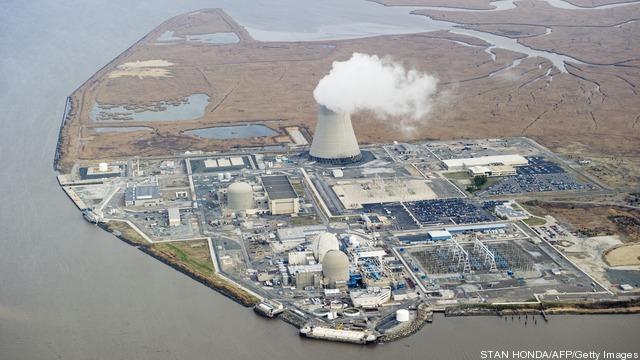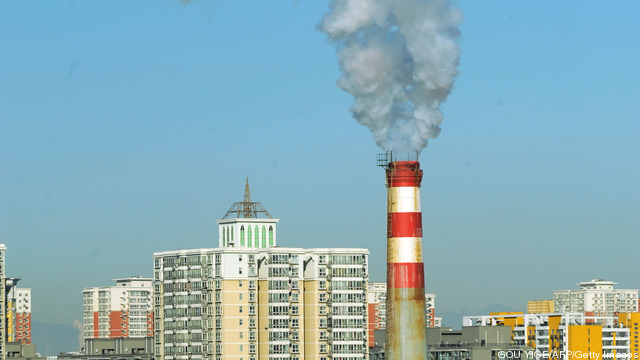It is not just coal’s future that depends on the price of gas, but nearly everything else. With so few new reactors under construction – outnumbered by those expected to be shut down for technical, safety-related or economic reasons – the prognosis from the Energy Information Administration (IEA) in its 2013 Annual Energy Outlook is… Keep reading →
Renewables
Sign up and get Breaking Energy news in your inbox.
We will never sell or share your information without your consent. See our privacy policy.OpEd: For Local Chambers of Commerce, Clean Energy and Innovation Make Smart Business Sense
By Ryan EvansWhen you think of the strongest advocates for clean energy or clean air, your mind may not jump right to businesses. But it should. According to a new report issued today by the Chambers of Innovation and Clean Energy, local chambers of commerce are showing leadership around the country on clean energy innovation. It makes… Keep reading →

At last week’s launch of Columbia University’s Center on Global Energy Policy, author and energy analyst Daniel Yergin talked about what he sees as today’s three big energy questions. Dr. Yergin recently released a new book entitled “The Quest,” which follows up on his Pulitzer-winning history of the global oil industry, “The Prize.”
1) Is there enough energy? Will we run out? A few years ago peak oil was a common topic and dark days were seemingly ahead – demand was concentrated in OECD countries and ROW (rest of world) was just the tail until about 2004 when demand in emerging markets exploded, said Yergin. But every time it seems we are running out of oil, he went on to say, technology helps find and develop more, like we have now with shale and tight oil & gas. However, while concerns about peak oil may not be as urgent as they seemed a few years ago, new challenges have arisen, and “it’s still sobering to look at these energy challenges,” he said. Keep reading →
Mayor Bloomberg Speaks at Columbia University Center on Global Energy Policy Launch
By Jared Anderson
New York City – the world’s energy finance capital and one of the world’s largest commodity trading marketplaces – is a fitting location for the Center on Global Energy Policy. As part of Columbia University’s School of International and Public Affairs, the center will seek to “provide independent, balanced, data-driven analysis to help policymakers navigate the complex world of energy.”
At Wednesday’s launch event, New York City Mayor Michael Bloomberg was joined by energy experts and US government officials, who helped officially inaugurate the new energy policy initiative. Keep reading →

Memo To DC: Think Long-Term On Clean EnergIn his inaugural address, President Obama issued a ringing call for U.S. leadership on the development of sustainable energy technologies. Given Republican reluctance on the issue, what that will mean in practice is hard to say, but a leading nonpartisan research group has a message for the administration and Congress: Adopt long-term, consistent policies or lose out to the rest of the world.
“Although initiatives in recent years have helped to stimulate clean energy progress in the United States, the future of government policy is now uncertain and weighs heavily on U.S. industry and its competitive prospects,” the Pew Chartitable Trust says in its new study [PDF], “Innovate, Manufacture, Compete: A Clean Energy Action Plan.” Keep reading →
 US President Barack Obama tours the General Electric Plant with GE Chairman and CEO Jeffrey Immelt (L) and plant manager Kevin Sharkey January 21, 2011 in Schenectady, New York.
US President Barack Obama tours the General Electric Plant with GE Chairman and CEO Jeffrey Immelt (L) and plant manager Kevin Sharkey January 21, 2011 in Schenectady, New York.
General Electric recently announced $1.2bn orders for its new FlexEfficiency 60 turbine, which the company claims is a step change for the industry in its ability to supply both baseload power and ramp quickly to smooth intermittent loads from solar and wind. Keep reading →

Recent evidence suggests companies that score highly on sustainability metrics tend to be well run and have solid business models – 655 institutional investors representing $78 trillion in assets appear to agree.
The 655 investors are signatories to the Carbon Disclosure Project, which is a global greenhouse gas emission reporting initiative that incentives companies, governments and cities to voluntarily disclose data pertaining to key sustainability metrics. Keep reading →

What if all the energy we needed was stored underneath the ground we walk on every day?
Geothermal power, generated from capturing earth’s core heat stored deep underground, has become a growing reality as the industry marks a total US generation capacity of 3,000 MW this year. But unlike more recognized renewable energy sources like wind, solar and biomass, geothermal power is not widely recognized for its capability to produce base load, dependable, renewable energy. Keep reading →

The Solyndra bankruptcy led to a sudden frenzy of attention for government incentives for the renewable energy industry.
But even before the CIGS solar panel manufacturer announced it would be laying off all 1,100 of its employees and shutting down operations, private equity firm DBL Investors set out to look at the history of government incentives for the renewable energy industry and compare the numbers with data on government support of fossil fuels and nuclear power. Keep reading →

Even as Canada withdrew from the Kyoto Protocol this month–during the United Nations Climate Change Conference in Durban, South Africa–the European Union set an aggressive energy roadmap to reduce greenhouse gas (GHG) emissions to 80%-95% below 1990 levels by 2050.
The transformation will make Europe less dependent on external energy supplies. Keep reading →


